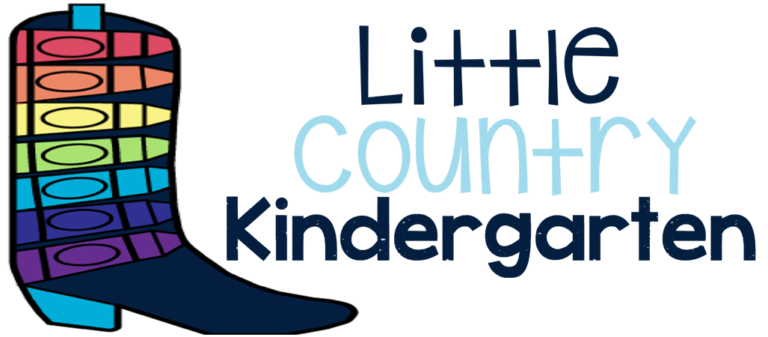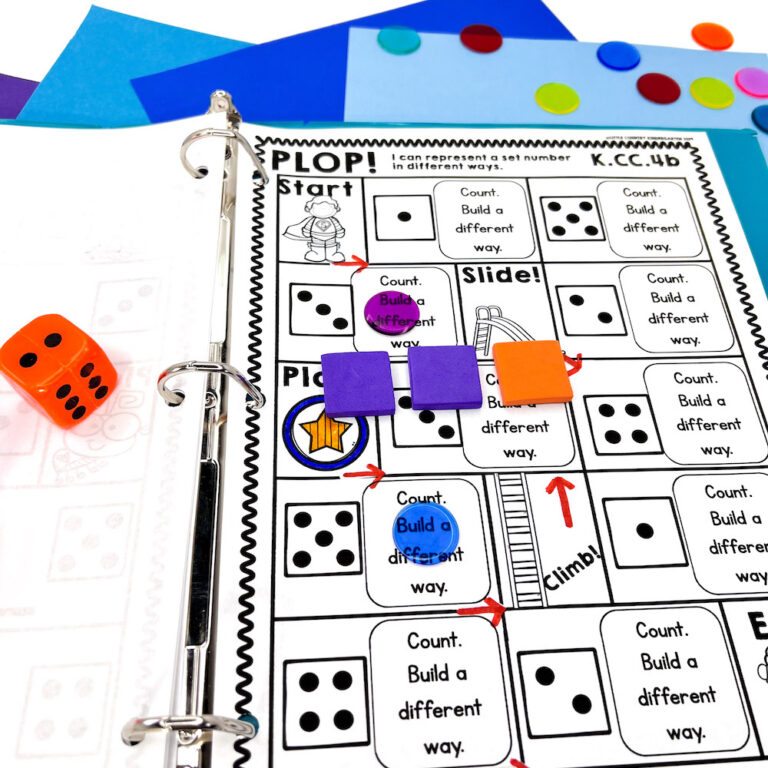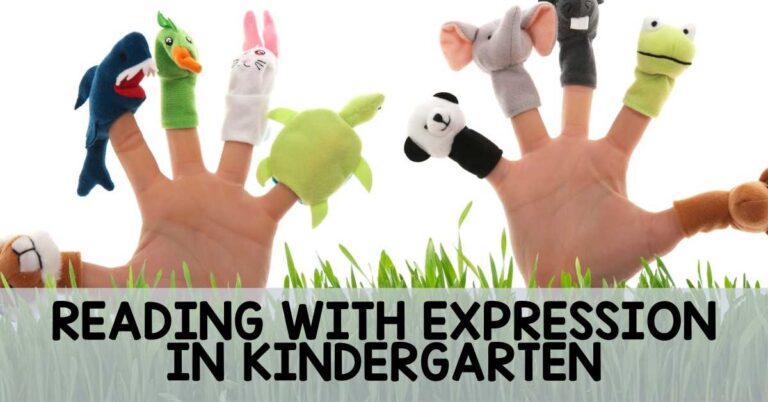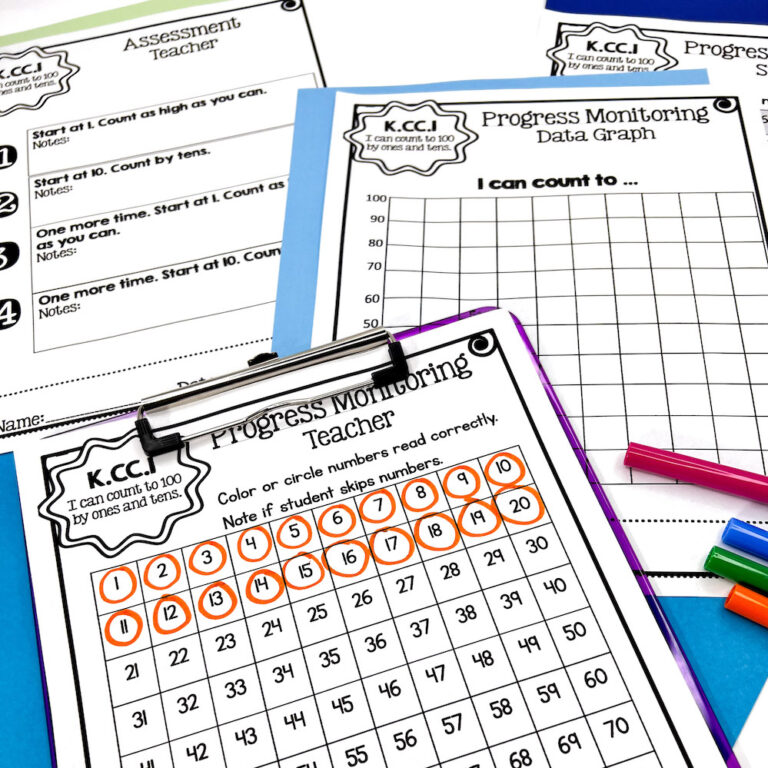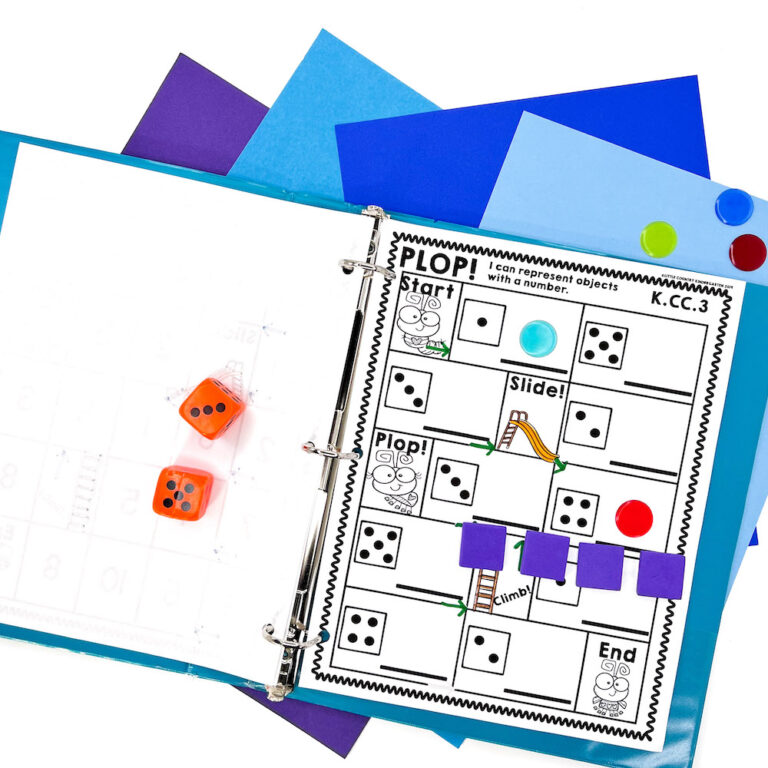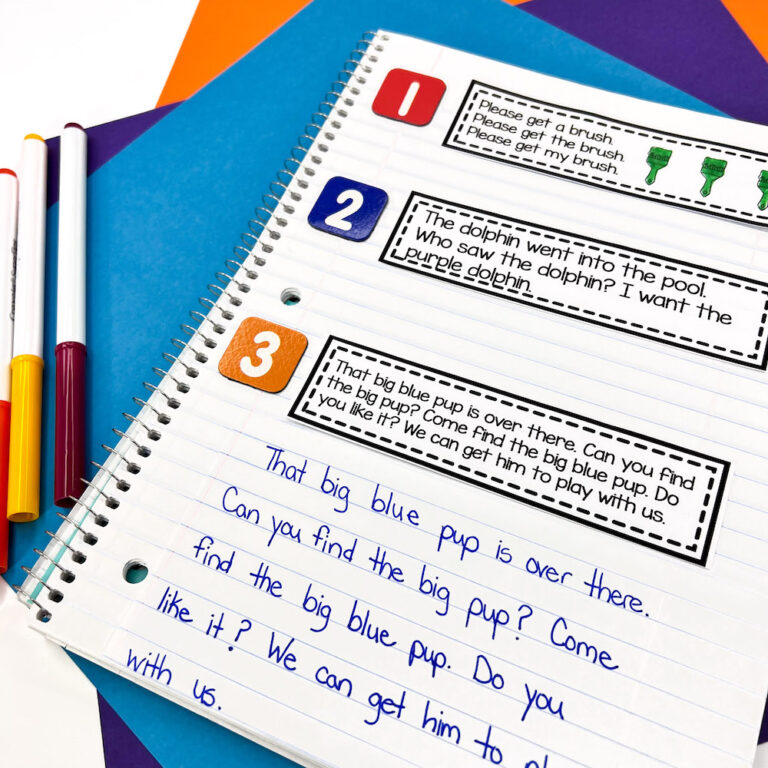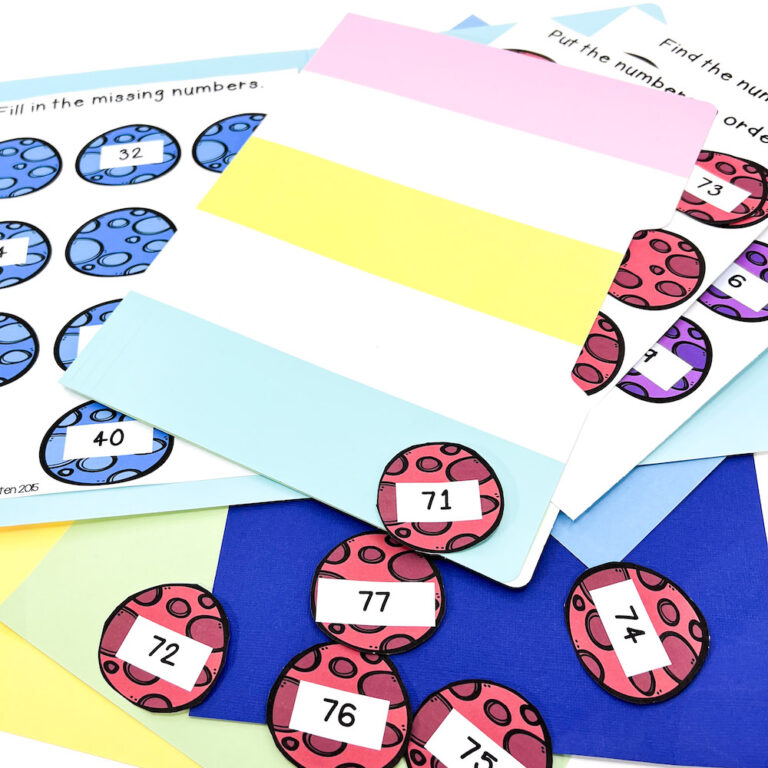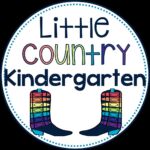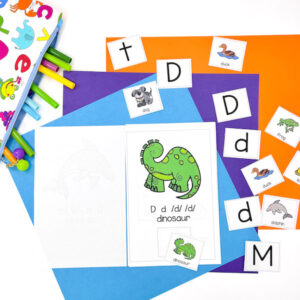I’m always trying to connect with my families and form those positive relationships. We are a team working together for their student so I want them to stay informed and included. Phonics can be an overwhelming thing to explain to families! Instead of phonics homework, I like to focus on these 5 types of phonics activities for parents to do at home as a part of my school to home connections.
Why do I need phonics activities for parents to do at home?
We know that phonemic awareness and phonics are the building blocks for helping our young learners read. I explain to families that phonics focuses on the letter-sound correspondences. Students need these because they help them sound out words for reading and writing!
The more practice students have decoding, the more they start to automatically recognize words. This leads to them reading more fluently. Phonics activities for parents to do at home help our littles bloom!
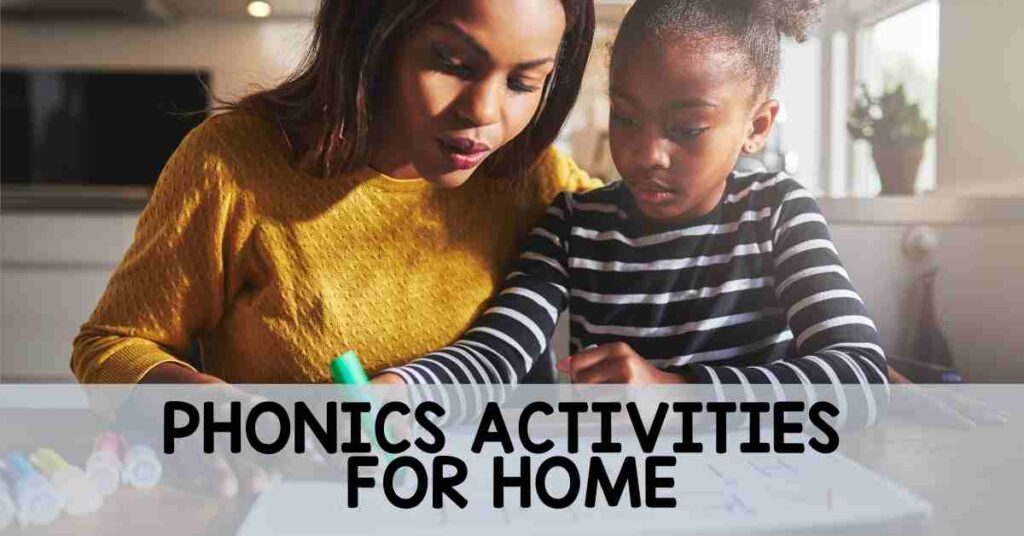
1. Provide Choices
Choices are an important part of any home activity. My students work hard all day so I want them to play and enjoy family time at home. Giving choices to families allows them to see what students are working on and be part of the learning process. However, it avoids overwhelming them with phonics homework or causing family stress. That is why these flexible phonics activities for parents to do at home are the perfect solution.
One of my favorite phonics activities for home involves choice boards. These allow for flexibility for home routines, are easily integrated into daily life, and have differentiated choices. Choice boards allow families and students to choose which activities they complete. It also gives them ideas for other types of phonics practice they could implement throughout the month.
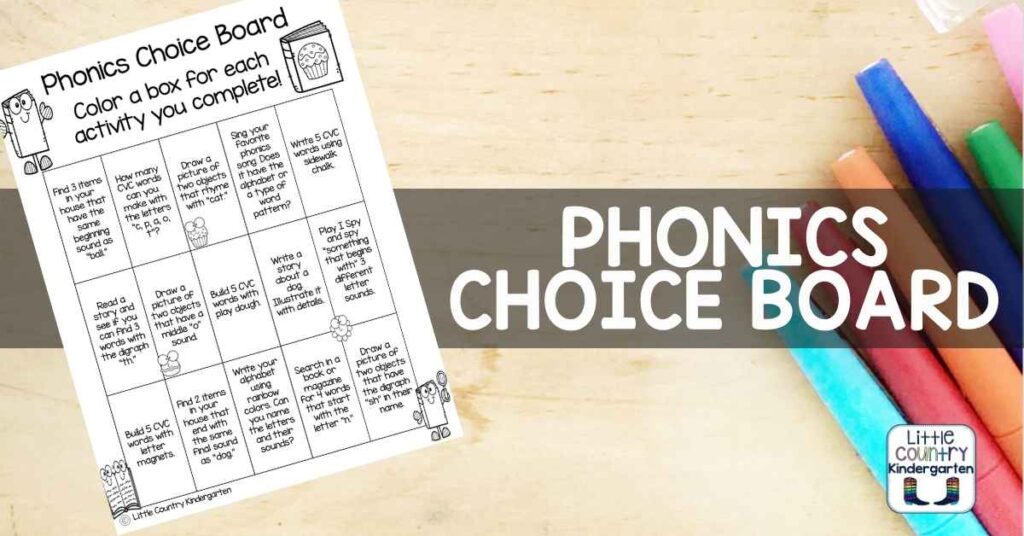
2. Promote Continuity between Home and School
Continuity with home and school is key to helping students bridge their learning across environments. I send home a daily communication folder and it has page protectors inside. Rather than assigning phonics homework, I fill these with phonics resources such as alphabet linking charts, questions, and prompts for reading with their child.
These resources make the perfect phonics activities for parents to do at home. Students are more confident showing their families skills when they have access to the same resources at home and school.
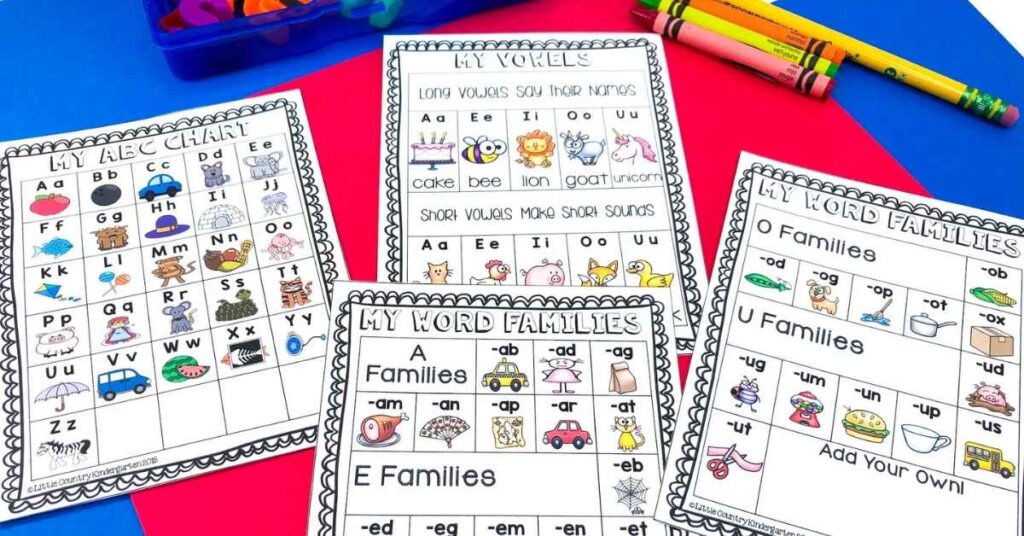
3. Improve Communication
Communication is a critical part to building those positive relationships with parents. They want to know what their students are learning and if they are doing well. We are so involved with our students and curriculum that it’s easy to forget parents don’t always know what is developmentally appropriate.
They aren’t always sure of common misconceptions for the age we are teaching. By communicating what is expected, and common mistakes students make when learning phonics skills, parents can better understand how to help their kids grow without having to assign phonics homework.
Sending exemplars of student work, explanations of different phonics patterns, and even the sequence of skills you are teaching can help parents know what to expect. This helps them understand if their child should be decoding something yet or not. I love to send home easy print and play game boards. These fun phonics activities for parents to do at home help my students show off what they have practiced and my parents see what they are learning!
4. Boost Confidence
Some parents didn’t have a great experience in school. They may have struggled themselves or are just worried about their child having a good experience. Therefore it is important to boost their own confidence in helping their child. I always remind my families that they are their child’s first teacher! They are so integral in the learning process, and phonics activities for parents to do at home are a great reminder of that.
I send photos of their child succeeding in the classroom and positive shoutouts. We also celebrate wins with word crowns and certificates. All of this helps parents see their child growing and feel more confident helping them. Although some times I have students complete their certificates and crowns in class, I also like sending these home for students to complete with their families. It’s a fun activity for students to show off that they have mastered something by coloring them with their families.

5. Foster Collaboration
Collaboration with families that know we are a team fosters those positive relationships necessary to help students grow. In order to block barriers such as not having resources at home, I like to send home fun manipulatives as an alternative to assigning phonics homework. These are often letter magnets or googly eye pointers.
When students are learning a new phonics pattern they can practice building them on their fridge to show their families. Students love showing their families their weekly books and finding the phonics focus with their googly eye pointers. Sending home little pieces of the classroom with these phonics activities for parents to do at home is an easy way for them to practice across environments and involve families in their learning.
What are 10 More Easy Phonics Activities for Parents to do at Home?
1. Home Scavenger Hunts are a no prep activity that children have a lot of fun with. Parents simply ask their child to find an item in their home that starts with a given beginning sound, has the same final sound as a given word, same medial sound, etc. You can do this with any phonics pattern and kids love running around the house trying to find a matching object.
2. Mystery Words is when parents give their children flashcards, magnet letters, or even cut up letters from magazines and ask them how many words they can make from the given letters. This can be challenging by only giving a few letters and setting a timer to have students race the clock. Giving more letters will make it simpler because kids can come up with practically any word or limiting letters makes them think of multiple words with the same phonics pattern such as all the words in the short a cvc word family.
3. Rhyming Pictures is when you ask your child to draw a picture of a word that rhymes with a word you have already drawn or written. Using index cards for this makes it easy to have a deck of cards over time with matching rhyming words. Once a sizeable amount of matches are made this easily becomes a memory game! Turn all the cards face down and take turns picking pairs to try and find a match.
4. Chalk it Up! Easy phonics activities for parents to do at home can include almost anything. Taking sidewalk chalk and writing words, illustrating them, creating rhyming words, and more can be a fun activity with so many possibilities. Children can practice writing over the chalk with water and paintbrushes when they are done for another fun sensory activity.
5. Phonics Songs are a simple yet effective way for families to practice phonics with their children. There are tons of songs for practicing letter sounds, blends, digraphs, and more. Some of my students’ favorite songs each year come from Scratch Garden!
6. Rainbow Writing lets children show their creatitivy while practicing phonics patterns. They can write their letters in different rainbow colors, name the letters, say their sounds, and then make words from them. This can also help them practice writing words in the same word family and more.
7. Literacy Scavenger Hunts let kids look through books, magazines, road signs, and more for words that start with a given letter, certain cvc words they are learning, phonics patterns like digraphs or blends, and more. If they are looking through newspapers or magazines they can even use highlighters to highlight the words they find.
8. I Spy is an easy phonics activity to play at the grocery store, doctor’s office, or anywhere really. Instead of saying you spy something green or really big you’d say that starts with the ch sound or with the letter a. Adults and children can take turns spying and finding the objects that meet the phonics challenge.
9. Phonics Hopscotch is a fun game to play outside and get some movement incorporated into phonics learning. Draw letters on the hopscotch squares and as you jump on each letter you have to say the letter sound. Jumping from letter to letter can help you make certain words as you blend the letters together.
10. Mystery Bag is probably my favorite of the phonics activities for parents to do at home. The adult simply puts three or four items in a bag that have the same theme such as starting with the same beginning sound. The child reaches in and feels them to try and figure out what each object is. Then they have to figure out what they have in common.
Phonics Activities for Parents to do at Home Takeaways
Students succeed when teachers and families work together as a team. These easy phonics activities for home can help give your parents choices while fostering continuity between home and school, communication, confidence, and collaboration.
Try a Free Choice Board for Phonics Activities for Home Today!
Print and send this phonics choice board home for your families today! It has plenty of options for parents to choose what works best for their daily routine without becoming overwhelmed. Your students will be proud to show off their new decoding skills. Parents will love seeing their child’s progress from learning letter sounds to blending and reading words with these phonics activities for parents to do at home.
